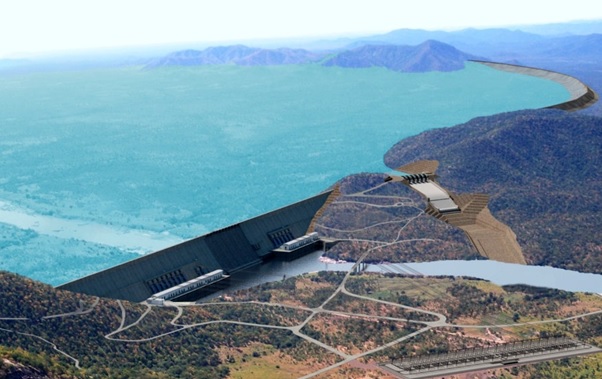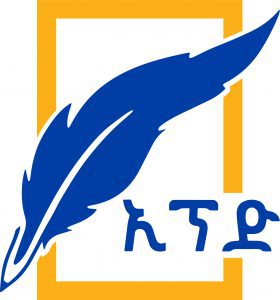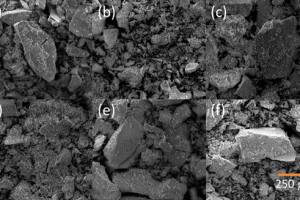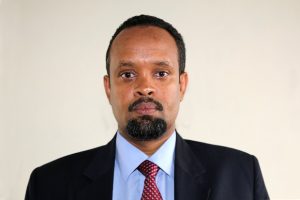
The Grand Ethiopian Renaissance Dam (GERD), now called by the majority of Ethiopians Abbay Dam, is a gravity dam on the Abbay River in Ethiopia. Construction started in April 2011 and has now reached its inaugural phase.
The dam’s primary purpose is electricity production which aims to relieve Ethiopia’s acute energy shortage and to export electricity to neighboring countries. With an installed capacity of more than 6,450 gigawatts, the dam is the largest hydroelectric power plant in Africa and among the 20 most significant in the world, sources indicate.
While promising increased electricity generation and potential economic benefits for Ethiopia, countries in the Eastern African Region also benefit directly or indirectly from its bounties. Regardless of some threats that arise from the lower basin countries that have no concrete foundation, the Dam is expected to significantly benefit the economies of Ethiopia, Sudan, and Egypt, with the potential for increased hydropower generation, irrigation, and overall economic growth.
The Dam is expected to significantly boost Ethiopia’s electricity generation, potentially doubling its capacity and enabling exports to neighboring countries. Over half of Ethiopia’s above 120 million people are living in absolute darkness because of a lack of electricity supply. This large amount of people depend on forest resources for household chores like cooking food which contributes to forest degradation and petroleum for light during the night time that negatively impacts climate change.
Power supply for this portion of the people, thus, affects not only the nation’s energy self-sufficiency but also the global climate change. Over 60 million Ethiopian people, especially in rural areas, utilize firewood for cooking and kerosene for light which adds carbon emissions.
While constructing this mega Dam that is nearing its completion, the Ethiopian government aimed to pick out these people from darkness and make them entertain modern life on top of transforming its economy. Electricity supply for these people and their children means many things. Access to electricity is their right as it is among the basic needs especially nowadays when the entire world is getting streamlined.
Besides, access to electricity gives people the opportunity to chip in valuable assets in the national and global socio-economic arena. They preserve the forest and thereby contribute to the green economy. They also gain benefits such as protecting their health which could be affected when using firewood and kerosene, and upgrading their life standards by owning modern electrified equipment like radio, television and maybe refrigerator and stove and get updated. Their children could also get a better education that empowers them to be competent nationally and internationally. They can modernize their farming system using electrified machinery like water pumps.
Millions of Ethiopians will have access to electricity for the first time. Currently, over 66% of Ethiopia’s over 132 million citizens lack electricity. Once operational, the dam will provide electricity to over 76 million Ethiopians. The surplus electricity produced by the GERD will be a steady source of income. The enormous dam will generate more than 6,450 MW of electricity, which is more than Ethiopia’s current needs.
The Ethiopian government has begun to export power to neighboring nations, including Djibouti, Sudan and Kenya, expecting to expand the service to Eritrea, and South Sudan among some eastern African countries.
The dam will greatly reduce sedimentation in the Blue Nile. Sedimentation poses a huge problem for farmers living in the area, as it clogs irrigation channels and hurts the efficiency of hydropower. The GERD will save the costs of building new canals and eliminate the need for building new machines.
The GERD will also regulate the Blue Nile’s flow. The dam includes reservoir construction, which will weather the effects of drought and manage flooding during heavier rain seasons. This will provide farmers with a uniform schedule, rather than being at the mercy of the elements, as it was in the past.
The GERD has the capacity to irrigate a vast arable land. The fertilization of soil will guarantee a successful harvest for millions of farmers. This is crucial to ensuring the growth of Ethiopia’s economy, which relies on agriculture. The dam’s operation could facilitate irrigation expansion in Sudan, potentially increasing agricultural production and economic benefits.
The construction of the dam is transforming formerly arid land to be more useful for the country. The site of the dam was a region of lifeless land about 20km from the Ethiopian-Sudanese border. After the GERD is finished, the artificial lake will hold up to 74 billion cubic meters of water.
With the undertaking of this massive project, Ethiopia shows it has no intention of stagnating in its goal to reduce poverty. Once Ethiopia’s GERD is completed, Ethiopia’s economy will flourish and the dam will decrease poverty across the nation.
According to a study by the Ethiopian Economic Association (2020), Ethiopia’s economic growth is expected to increase by about 1.5 per cent due to GERD operation. The economic growth in Ethiopia is anchored mainly on a tremendous increase in energy supply and capital stock from the GERD which are expected to improve efficiency and productivity in the economy.
The economy of Sudan expands by 1.2 per cent due to GERD operation; mainly due to enhanced capital stock, resulting from GERD-induced flood damage reduction. Reduced sediment load and hence enhanced power generation in the Sudan’s power plants from the GERD operation stimulates economic growth in the Sudan. With higher benefits in terms of improved water use efficiency, the GERD further improves economic growth in the Sudan.
GERD operation also offers Egypt’s economy significant benefits in terms of increased water supply due to reduced evaporation loss from the High Aswan Dam (HAD), as well as the opportunity for improving water use efficiency as a result of a more regulated flow of water throughout the year. GERD operation overall enhances Egypt’s economy to a certain extent.
Thus, accounting for engineering estimates of GERD’s potential impact on HAD, the net economy-wide effects, in terms of economic and welfare benefits, are positive for all the Eastern Nile countries, including Egypt. This underscores the fact that the benefits of the GERD shall be seen in the wider economic perspective that takes into account both the direct and induced effects of the energy generated from the dam.
The grand project can be a means of technological transfer to the Ethiopian domestic experts. It is at the center of Ethiopia’s development strategy. It will provide cheap and abundant electricity to the booming manufacturing sector of the country where the electricity demand is growing by more than 20 percent each year.
Most importantly, the Dam will boost the cooperation and mutual understanding between riparian countries (The Nail Basin countries). These countries hope that its completion will change the face of East African power infrastructure. This will have a positive effect on regional integration and development in the region.
GERD reservoir has created around 70 islands, which Prime Minister Abiy Ahmed has highlighted as having “immense tourism destination development potential”. Abiy noted, “There are many possibilities for us on the horizon if we commit to working in unison to unlock our national potential,” ENA reported. The dam could also serve as a research site for universities with related fields of study, such as fishery, natural science, animal science, and biology.
BY BACHA ZEWDIE
THE ETHIOPIAN HERALD WEDNESDAY 2 APRIL 2025





